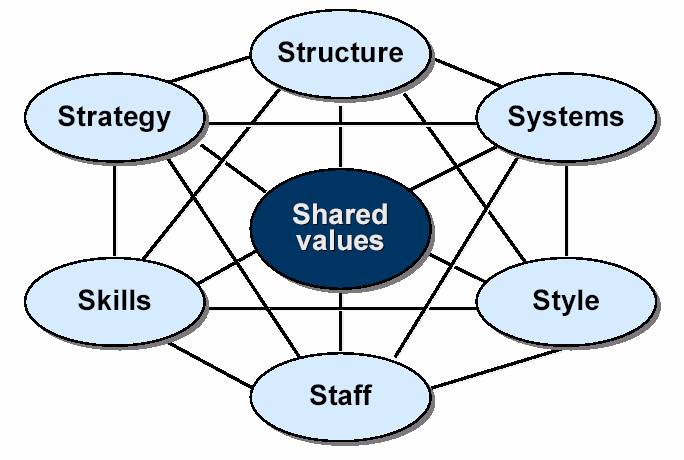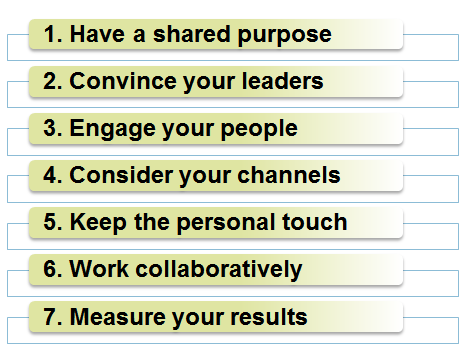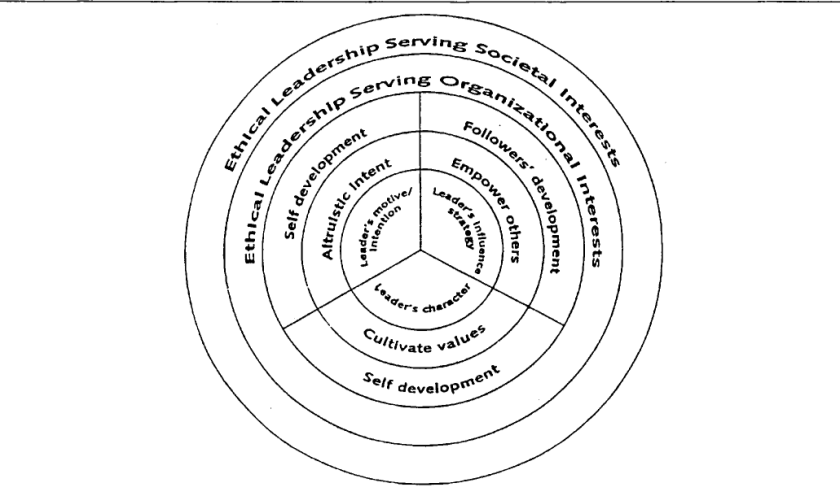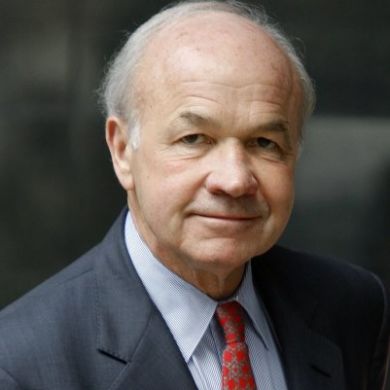In today’s age, the business environment is faced with never-ending competition (Armenakis et al., 2000) and developments in organizational technology infrastructure. Alongside these external factors, businesses are faced with changes in socio-cultural and environmental factors that can and most likely affect the success of an enterprise (Peterson et al., 2001). However, these challenges can be seen as opportunities for development to aspiring leaders (Wharton, 2016). As discussed by Powers (2004), dynamic leadership is paramount for tomorrow’s success and survival of an organisation. The leaders of tomorrow needs to incorporate ways of gaining commitment and momentum towards a united purpose directed through empowerment and collective interests of their followers (Powers, 2004).
Figure 1- Leadership Quote by Henry Kissinger (source: Quotefancy.com)
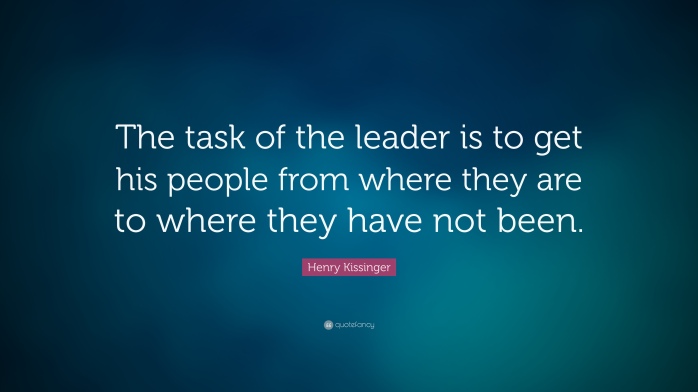
In my opinion, my leadership approach will be highly situational. That being said, I am an advocate of situational leadership in management. Furthermore, I would highly recommend Fiedler’s (1967) contingency model of leadership effectiveness or any hybrids that includes situational aspects into its frameworks such as McKinsey’s Situational Leadership Model (2016). I believe that managers should lead individuals based on the circumstances of the environment, the organisation, the individual and the tasks at hand. These leaders have to adapt their leadership style based on the situation (Mullins, 2010; McKinsey, 2016; Fiedler, 1967).
As consulted in my earlier blog under ‘Most Effective Leadership, Management & Approaches’, Fiedler’s (1967) theory considers the circumstances of the task structures, leader-member relations and leader-position powers (see figure 2).
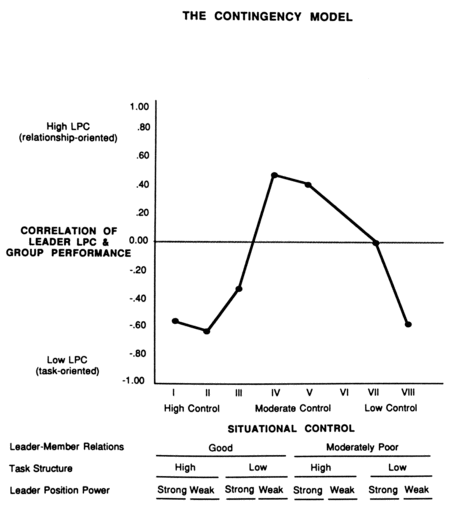
Figure 2: Adapted from Fiedler (1967)
Source: Psycnet.apa.org
To learn more about Fiedler’s (1967) contingency model for situational leadership, please view my previous blog.
What have I learned?
Since I have started my MBA programme, I have managed to be part of an integral team within our course. My research and discussion regarding the capabilities and characteristics of an ethical and effective leader has helped me understand how to become a role model and a leader that adopts different leadership styles to adapt to the circumstances at hand (see table 1).
Table 1- Summary of What I have learned

My Inspiration
The leader who has inspired my understanding of effective leadership has to be Winston Churchill (see figure 3) for his tremendous success as leader during troubling times of war and distress.
Figure 3- Winston Churchill (source: Time.com)
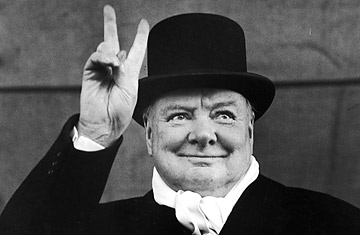
Although he may not be a business leader, I think he has actually demonstrated many notable characteristics of a successful transformational and situational leader which has revolutionized the way leaders within business organizations look at accomplishing both personal and collective goals. Churchill has inspired me truly by the art of speech and teamwork.
Figure 4- Winston Churchill Quote (source: quotesgram.com)
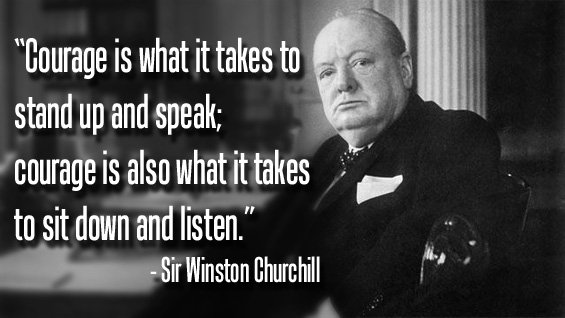
Firstly, Churchill has never worked alone and relies on coalition and teamwork to ensure success (Freeman, 2015). Secondly, Churchill is remembered for his great talent for speaking and communicating in public to keep morale high with the entirety of his team (Freeman, 2015). Thirdly, he was not afraid to take chances, accept responsibility, and accept suggestions from his followers. This demonstrates characteristics of an effective leader who empowers and includes his followers’ creativity and ideas into his political plays. To read more about what he has thought to business leaders, click here or alternatively watch the video below.
Skills Development
After receiving feedback from my teammates and personally reflecting on my actions and research of leadership, I can surely say that my leadership skill needs to be continuously development throughout my life. I feel as if I have ability to be a great leader because many of friends, family and colleagues see me as a figure to follow during times of unrest. In fact, after rigorous Myers-Briggs Type personality tests, the results show that I am an ENFJ (Extroversion, Intuition, feeling and judgment). ENFJs are “natural-born leaders, full of passion and charisma. Forming around two percent of the population”, (16Personalities.com).
Figure 5- ENFJ, The Leader (source: 16personalities.com)
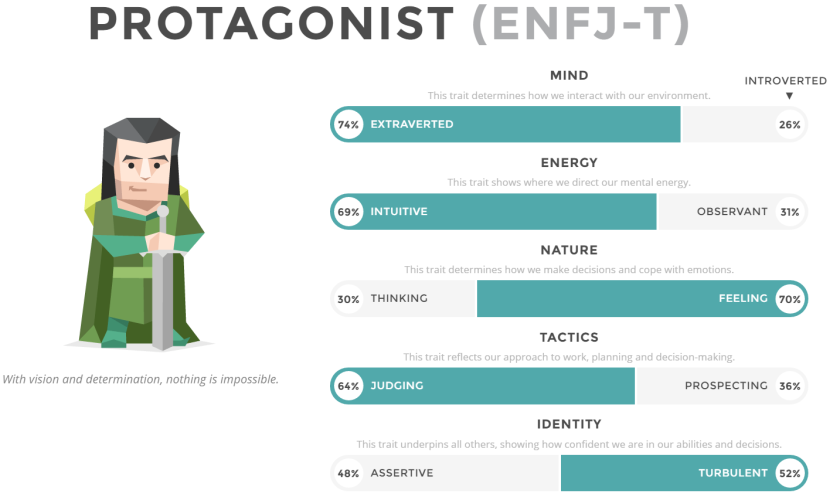

I have never seen this responsibility of being a leader for others as a burden but as an opportunity to extend myself (see figure 6). Going through this MBA programme, my goal is to increase my understanding and knowledge whilst developing my hard skills such as leadership and strategy formulation skills. In order to measure my progression every 8 months, I have created a personal development plan (PDP). To be an effective leader, I must keep improving these skills and start putting knowledge into practice. One day, I will be the leader of tomorrow.
Figure 6- My Team and our Team-Building Group Activities
References
Armenakis, A. , Harris, S. G , Feild, H. S. (2000), Making change permanent A model for institutionalizing change interventions, in (ed.) Research in Organizational Change and Development (Research in Organizational Change and Development, Volume 12) Emerald Group Publishing Limited, pp.97 – 128.
Fiedler, F. E. (1967). A Theory of Leadership Effectiveness. McGraw-Hill.
Freeman, D. (2015). Winston Churchill & Lessons for Business Leaders. [online] Winstonchurchill.org. Available at: http://www.winstonchurchill.org/publications/finest-hour/finest-hour-166/winston-churchill-lessons-for-business-leaders [Accessed 14 Mar. 2017].
Gardenswartz, L. & Rowe, A. (2003). Four layers of diversity. Retrieved from http://www.gardenswartzrowe.com/why-g-r
Maccoby, M. (2000). The Human Side: Understanding the Difference between Management and Leadership, Research-Technology Management, 43(1), pp. 57-59.
McKinsey. (2016). Leadership in Context [online] available at: http://www.mckinsey.com/business-functions/organization/our-insights/leadership-in-context [Accessed 7 Mar. 2017].
Mullins L. J. (2010) ‘Management and Organizational Behaviour’. Ninth Edn. Edinburgh Gate: Pearson Education Ltd.
Murray, A. (2010). The Wall Street Journal essential guide to management. 1st ed. New York: HarperPaperbacks.
Peterson, D., Rhoads, A. and Vaught, B.C. (2001). Ethical beliefs of business professionals: A study of gender, age and external factors. Journal of Business Ethics, 31(3), pp.225-232.
Power, P.G., 2004. Leadership for tomorrow: Once more, with feeling. Mt Eliza Business Review, pp.43-49.
Wharton (2015). McKinsey’s Dominic Barton On Leadership [online] available at: http://knowledge.wharton.upenn.edu/article/mckinseys-dominic-barton-on-leadership-and-his-three-tries-to-make-partner/ [Accessed 7 Mar. 2017].



